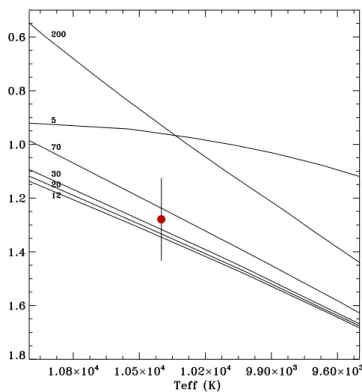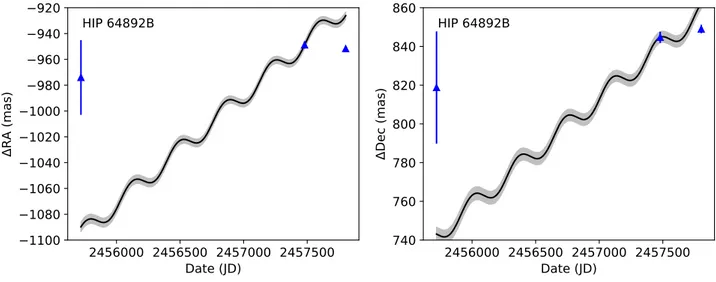Discovery of a brown dwarf companion to the star HIP 64892
Texte intégral
Figure




Documents relatifs
Previous studies of the low-mass young system T Tau have used radio observations to model the spectrum and estimate important physical properties of the associated ionised plasma
We report the discovery of an eclipsing binary system with mass-ratio q ∼ 0.07. After identifying a periodic photometric signal received by WASP, we obtained CORALIE
The astrometric parameters are the two position coordinates, the two proper-motion components, and the parallax of the mass center of the system (central star and low-mass
Standard template profile for PSR J1756 −2251, constructed from data taken with the GBT using the GASP pulsar backend..
– one using the VLBI position and the other using our best fit position – show that the Shapiro delay parameters and the orbital variability parameters change by 1 σ or less with
The present results suggest that the coordination between the pelvis and thorax rotations in the coronal plane during walking is correlated to the clinical and structural severity
To estimate the spectral type and e ff ective temperature of the companion, we compared the observed spectrum and photome- try of HIP 64892B with a range of spectra compiled from
If CFBDSIR 2149 is a higher gravity, higher mass brown dwarf then our data are only consistent with models at super-solar metallicity, which is a relatively rare oc- cureence in

